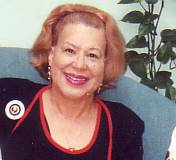How did and when people of African heritage came to acquire and have the surname of Martin is a matter of importance to generations that received it and ought not be generalized. Sarah Robinson, born abt 1880 experienced the hardships of reality experienced in marriage and raising up a new generation. At some point in her life, she changed the surname of her offspring to Martin and our speculation is that a good reason existed to do so.
History
Brandon Plantation was part of a 1616 land grant of approximately 4,550 acres (18 km2) on the south bank of the James River to Captain John Martin (1560-1632). Captain Martin was one of the original colonists and a member of the first Council in the spring of 1607, when Jamestown was first established. Martin's new plantation built on the 1616 land grant was initially named "Martin's Brandon", apparently incorporating the family name of his wife, Mary (née Brandon) Martin, daughter of Robert Brandon, a prominent English goldsmith and supplier to Queen Elizabeth I of England. They had been married in 1586.
In 1619, Martin's Brandon was one of the plantations represented when what became the House of Burgesses, the first representative legislative body in the English colonies, met at Jamestown. The representatives of Martin's Brandon were Thomas Davis and Robert Stacy. During the Indian Massacre of 1622 which occurred on Good Friday, March 22, 1622, there were 7 deaths recorded at Martin's Brandon, including one woman and two boys. 347 deaths were recorded during the coordinated attacks along both shores of the James River, from the mouth of the river at Newport News Point on Hampton Roads, west to Falling Creek. [1]
Captain John Martin died at Martin's Brandon Plantation in 1632. His grandson, Captain Robert Bargrave, inherited the plantation on Martin's death. In 1637, merchants John Sadler and Richard Quiney and mariner William Barber, bought Martin's Brandon. They and their heirs farmed it successfully until 1720 when it was sold to Nathaniel Harrison (1677-1727). (Richard Quiney's brother Thomas was married to William Shakespeare's daughter Judith). After Nathaniel's premature death in 1727 it went into the hands of his son Nathaniel Harrison II, 1703-1791. Sometime before his death in 1791, Brandon came under the possession of Revolutionary War Colonel Benjamin Harrison, 1743-1807. At his death, the property was divided between his sons, and Upper Brandon Plantation was created.
Brandon Plantation (aka Lower Brandon) remained in the Harrison family until 1926, when it was acquired by Mr. and Mrs. Robert Daniel. The Daniels undertook the restoration of the house and grounds. In 1974, U.S. Congressman Robert W. Daniel, Jr. (1936-__) was the listed owner. Measures to improve drainage around the home began on December 3, 2007, by Shannon Hill of Draper Aden Associates.
Brandon is a National Historical Landmark. The manor house, furnished by the Daniels with 1760s era English and American furnishings, is open to tours. Their descendants continue to farm it in modern times. The agricultural activities represent one of America's oldest continuous farming operations.










